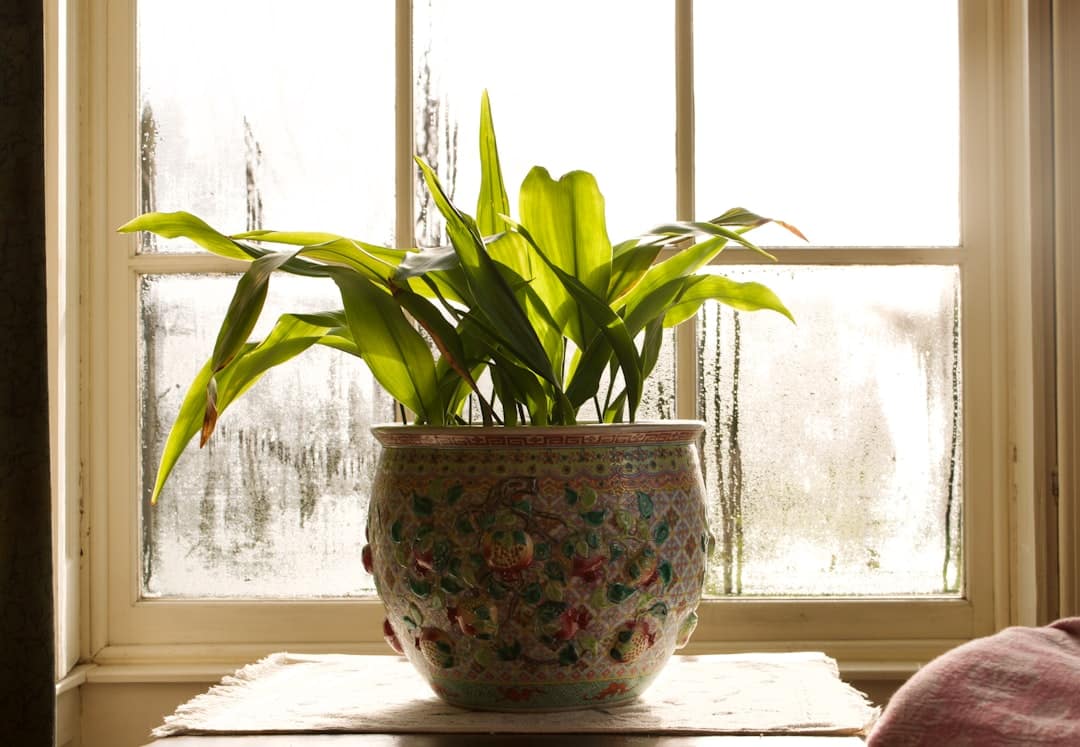As environmental concerns increasingly dominate public discourse, the need for chemical-free solutions in weed management has never been more pressing. Gardeners are turning to sustainable practices that not only promote a healthier ecosystem but also enhance biodiversity. By integrating ground-cover plants, native species, and effective mulching techniques, homeowners can cultivate thriving green spaces while simultaneously minimising their ecological footprint. This shift towards organic gardening not only combats weeds effectively but also ensures that future generations inherit vibrant landscapes rich in flora and fauna.
Key Highlights on Embracing Chemical-Free Gardening
- Environmental Concerns: With rising awareness about environmental issues, many gardeners are keen to explore sustainable alternatives to chemical herbicides. 🌱
- Ground-Cover Allies: Discover how ground-cover plants like creeping thyme and sedum can create a natural barrier against weeds while enhancing your garden’s appeal! 🌼
- Native Plant Advantages: Learn how incorporating native species fosters a self-sustaining ecosystem that requires less maintenance and supports local wildlife. 🦋
- The Mulch Effect: Find out the benefits of organic mulches in keeping your garden weed-free while enriching soil quality! 🍂
- Diversity is Key: Embrace diverse planting strategies that not only combat weeds but also promote healthy soil microfauna! 🥕
- Companion Planting: Explore how strategic plant pairings can enhance growth and deter pests, creating a harmonious garden environment. 🌿
- Cultivating Soil Health: Understand the connection between robust soil and weed management, laying the groundwork for a thriving garden. 🌍
- The Perennial Advantage: Discover why perennial plants are a gardener’s best friend in maintaining long-term weed control! 🌺
- Physical Barriers: Learn about effective physical deterrents like landscape fabrics and raised beds that protect your plants from invasive weeds. 🛡️
- The Bigger Picture: Uncover the long-term environmental benefits of organic gardening, ensuring future generations inherit lush landscapes rather than barren patches. 🌳
Did you know? A single **native plant** can support hundreds of insects, which play crucial roles in pollination and pest control—essential for a thriving garden ecosystem!
Understanding the Need for Chemical-Free Solutions
In an era where environmental concerns are at the forefront of public consciousness, many gardeners are seeking sustainable alternatives to chemical herbicides. The quest for a weed-free garden without resorting to harsh chemicals is not only beneficial for our health and the planet, but it also encourages biodiversity and promotes a healthier ecosystem. By carefully selecting plants that can naturally suppress weeds or create a more resilient garden, homeowners can cultivate flourishing green spaces while minimising their ecological footprint.
Choosing Ground-Cover Plants
Ground-cover plants can be a gardener’s best ally in the fight against weeds. These hardy plants spread across the soil, creating a dense mat that blocks sunlight from reaching unwanted weeds. Some popular choices include creeping thyme, which not only serves as an aromatic herb but also attracts pollinators; and sedum, known for its drought resistance and vibrant foliage. Additionally, plants like ajuga and phlox are ideal for filling gaps in borders or flower beds, ensuring that there is little room left for invasive species to take hold.
The Role of Native Plants
Incorporating native plants into your garden is an excellent way to enhance its resilience against weeds. Native species have evolved alongside local ecosystems and are well adapted to the climate and soil conditions of their region. By fostering these plants, gardeners can create a self-sustaining environment that requires less maintenance. For instance, wildflowers such as cornflower or black-eyed Susan not only add visual interest but also attract beneficial insects that help control pest populations. Moreover, native grasses like fescue or blue grama provide excellent ground coverage while deterring weeds.
Utilising Mulches Effectively
While not a plant per se, organic mulch plays a pivotal role in maintaining a weed-free garden without chemicals. Applying materials like straw, wood chips, or shredded leaves creates a barrier on the soil surface that inhibits weed growth while retaining moisture and improving soil quality as it decomposes. When used in conjunction with strategically placed plants, mulches can significantly reduce the time spent weeding while enriching the garden’s biodiversity. For optimal results, combine mulching with deep-rooted perennials that help bind the soil and outcompete weeds.
Diverse Planting Strategies
Embracing diversity in planting is another effective strategy to combat weeds organically. By incorporating a variety of plants—such as herbs, flowers, and vegetables—gardeners create an ecosystem where no single species dominates. This diversity not only deters weed competition but also promotes healthy soil microfauna that supports plant growth. Companion planting is particularly useful; for instance, marigolds can repel nematodes while enhancing the growth of neighbouring vegetables like tomatoes or peppers.
Implementing Companion Planting Techniques
Companion planting techniques can be highly effective in naturally reducing weed pressure. Certain combinations of plants work synergistically to deter pests and inhibit weed growth without chemical intervention. For example, planting basil near tomatoes not only enhances flavour but also helps ward off harmful insects. Similarly, interspersing carrots with onions can confuse pests that might otherwise target one specific crop type. This method underscores the importance of planning your garden layout strategically to maximise both space and ecological benefits.
Cultivating Soil Health
A crucial yet often overlooked aspect of achieving a weed-free garden lies in cultivating healthy soil. Healthy soil supports robust plant growth which inherently reduces opportunities for weed establishment. Implementing practices such as crop rotation ensures nutrient availability and prevents soil depletion while adding organic matter through composting enhances microbial activity essential for plant health. Moreover, regular testing of soil pH can guide gardeners in making informed amendments to create optimal growing conditions for desired plants over troublesome weeds.
The Power of Perennials
Perennial plants provide lasting solutions to maintain a weed-free environment due to their ability to establish deep root systems over time. Unlike annuals that require replanting each year—and therefore leave gaps susceptible to weeds—perennials create stable ground coverage year after year. Plants such as hostas or daylilies not only flourish beautifully but also form thick foliage that makes it difficult for unwanted weeds to thrive beneath them.
Creating Physical Barriers
In addition to plant selection strategies, physical barriers serve as effective deterrents against weed encroachment. Garden fabrics or landscape cloths act as protective layers between soil and sunlight while allowing water and nutrients to permeate through to established plants’ roots. Raised beds can also minimise weed intrusion by elevating garden areas off the ground where many invasive species thrive.
The Long-Term Benefits of Organic Gardening
Ultimately, cultivating a garden free from chemical interventions provides numerous long-term benefits—not just aesthetically but environmentally as well. A diverse array of plants fosters pollinator populations essential for food production while improving air quality through increased oxygen production. Furthermore, by adopting organic practices today, future generations will inherit landscapes rich with flora and fauna rather than barren patches overcome by stubborn weeds.
FAQ: Chemical-Free Gardening Solutions
What are chemical-free alternatives to herbicides?
There are several sustainable options available, such as using ground-cover plants, organic mulches, and native species that suppress weeds naturally. By creating a diverse planting strategy and cultivating healthy soil, gardeners can effectively manage weeds without resorting to chemicals.How do ground-cover plants help in weed control?
Ground-cover plants form dense mats that block sunlight from reaching weeds, preventing their growth. Varieties like creeping thyme and sedum not only suppress weeds but also enhance biodiversity by attracting beneficial insects.Can companion planting really deter pests?
Absolutely! Companion planting uses the natural synergies between different plants to enhance growth and deter pests. For example, marigolds can repel harmful insects while boosting the health of nearby vegetables.What role does soil health play in weed management?
Healthy soil is vital for robust plant growth, which naturally reduces the chances of weed establishment. Practices such as crop rotation and composting enrich soil quality, making it less hospitable for weeds while encouraging desirable plant development.The Future of Your Organic Garden Awaits!
As you embark on your journey towards a sustainable garden free from chemicals, remember that the choices you make today will yield long-lasting benefits for both your space and our planet. Embrace the power of diversity, nurture your soil, and watch your green oasis flourish with life. Stay tuned for more insights and tips on cultivating an eco-friendly garden that will inspire generations to come!




